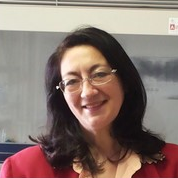Biologically Active Compounds from Marine Organisms
A special issue of International Journal of Molecular Sciences (ISSN 1422-0067). This special issue belongs to the section "Bioactives and Nutraceuticals".
Deadline for manuscript submissions: closed (30 December 2023) | Viewed by 2941
Special Issue Editors
Interests: drug discovery; marine biotechnology; marine organisms; molecular biology, molecular ecology
Special Issues, Collections and Topics in MDPI journals
Interests: chemical ecology; drug discovery; biotechnology; marine invertebrates; microalgae; diatoms; sexual biology; invertebrate physiology; ecological modelling; aquaculture
Special Issues, Collections and Topics in MDPI journals
Interests: microRNA; anticancer drugs; circulating biomarkers; marine compounds; natural compounds; melanoma
Special Issues, Collections and Topics in MDPI journals
Special Issue Information
Dear Colleagues,
The biodiversity of oceans favor the production of a large variety of novel molecules, with a relevant pharmaceutical potential. In fact, marine organisms may offer peculiar structural and functional features as compared to terrestrial ones. In the last years, molecular techniques facilitated the discovery of bioactive compounds from marine organisms, also due to the rapid diffusion of marine genomics, becoming available to an international scientific community. The development of genome sequencing technologies to find novel metabolites has definitely drown the attention of pharmaceutical industries, along with a drop of interest towards terrestrial natural products due to the advent of combinatorial chemistry. The advent of genome-based sequencing techniques, as for example the establishment of the genome mining, has permitted to obtain new natural drugs in a faster and cheaper way, proposing new challenges in the science of natural products discovery. New compounds were derived from the marine environment by ecologically-friendly approaches without impact on the environment and the use of destructive collection practices. Genome analysis shed light on the presence of several biosynthetic gene clusters, which could be involved in the synthesis of other secondary metabolites. Innovation in this field is very rapid, as revealed by the funding of several Seventh Framework Programme (FP7) and Horizon 2020 projects under the topic “Blue Growth”, where most projects had a common final goal of meeting the urgent need to discover new drug entities, to counteract the increased incidence of deadly diseases (such as cancer) and the reduced efficacy of existing drug. In this Special Issue, contributions on marine natural products isolated by molecular approaches are welcome, with applications in pharmacological, cosmeceutical and nutraceutical fields, aiming at solving issues related to human diseases.
Dr. Maria Costantini
Dr. Valerio Zupo
Dr. Paola Nieri
Guest Editors
Manuscript Submission Information
Manuscripts should be submitted online at www.mdpi.com by registering and logging in to this website. Once you are registered, click here to go to the submission form. Manuscripts can be submitted until the deadline. All submissions that pass pre-check are peer-reviewed. Accepted papers will be published continuously in the journal (as soon as accepted) and will be listed together on the special issue website. Research articles, review articles as well as short communications are invited. For planned papers, a title and short abstract (about 100 words) can be sent to the Editorial Office for announcement on this website.
Submitted manuscripts should not have been published previously, nor be under consideration for publication elsewhere (except conference proceedings papers). All manuscripts are thoroughly refereed through a single-blind peer-review process. A guide for authors and other relevant information for submission of manuscripts is available on the Instructions for Authors page. International Journal of Molecular Sciences is an international peer-reviewed open access semimonthly journal published by MDPI.
Please visit the Instructions for Authors page before submitting a manuscript. There is an Article Processing Charge (APC) for publication in this open access journal. For details about the APC please see here. Submitted papers should be well formatted and use good English. Authors may use MDPI's English editing service prior to publication or during author revisions.
Keywords
- bioactive compound
- cosmeceutical
- marine biotechnology
- marine organism
- molecular approach
- nutraceutical
- pharmaceutical
- algae
- invertebrate
- allochemical
- toxicity








